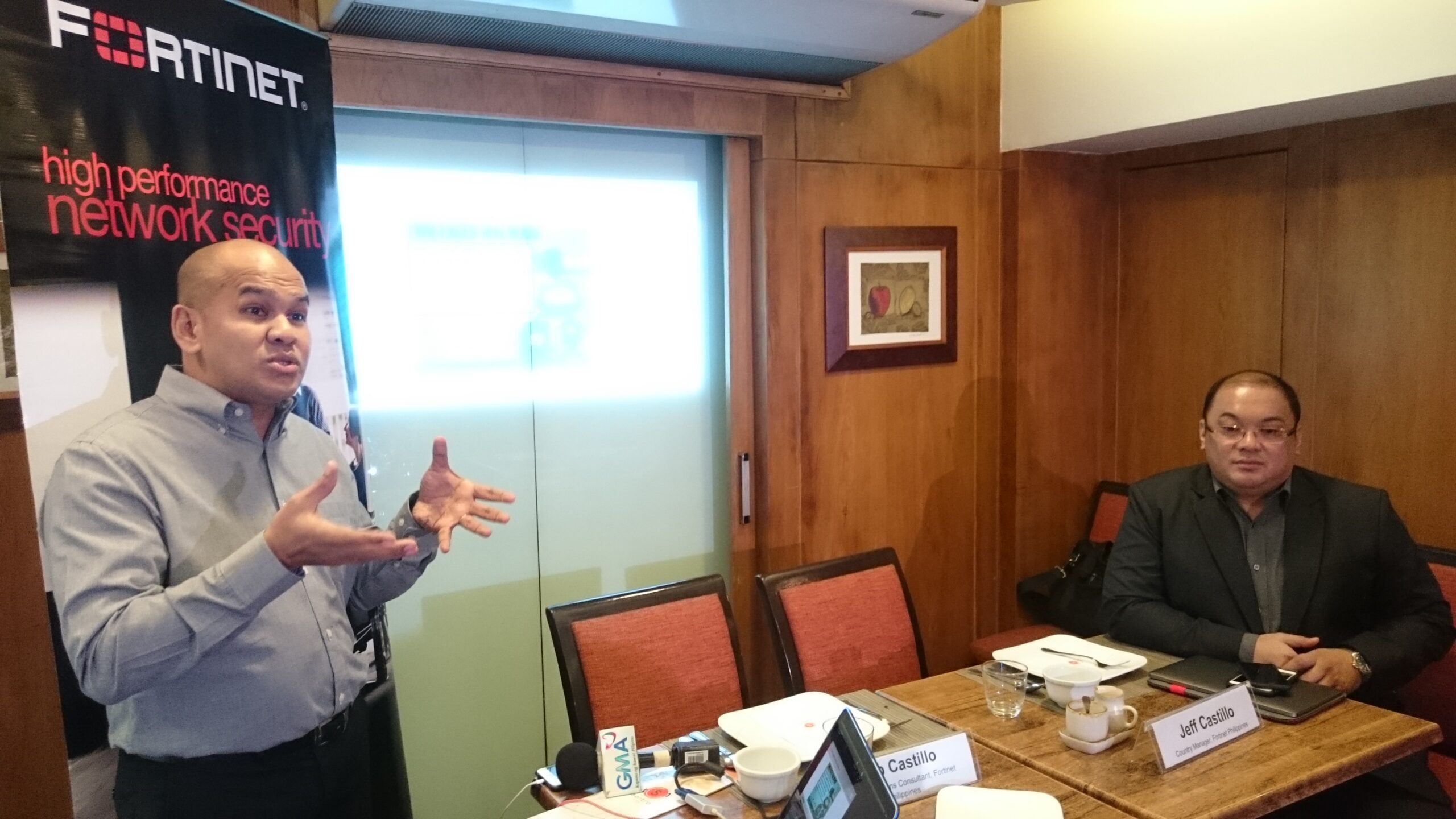SUMMARY
This is AI generated summarization, which may have errors. For context, always refer to the full article.

MANILA, Philippines – Highly vulnerable Internet-enabled devices, dubbed the Internet of Things (IoT), and cloud computing tops cyber security officials’ worries for next year.
Global cyber security firm Fortinet’s annual report, “New Rules: The Evolving Threat Landscape in 2016,” highlights IoT devices like smartwatches, TVs, and cars as ripe for hacking that can have catastrophic consequences.
Since these devices are relatively new, hackers tend zero in on them as they are often the weakest link in a company’s or individual’s cyber security platform, said Fortinet Philippines Senior Solutions Consultant Nap Castillo at a briefing on December 3.
Once malware is embedded, it can spread quickly to other devices through Bluetooth or Wi-Fi, thus affecting a victim’s entire network of digital devices.
Hackers also often use mobile devices as a shortcut to enter into more secure parent networks.
“It’s like breaking in the door and once in, simply moving from room to room,” Castillo said.
The problem is compounded by the fact that most users won’t even be aware of this happening until it’s too late, because most devices are “headless” or lack a user interface as they are designed to run in the background.
The rapid proliferation of IoT devices is particularly worrying, with research firm Gartnet estimating that there will be about 20 billion such devices in 2020, up from the estimated 4 billion today.
This year, there were a number of high-profile examples of alarming incidents, including a demonstration of how a Jeep Cherokee vehicle had its engine disabled, and a plane having its navigation system disrupted. (READ: Hackers gaining more tools to disrupt lives – experts)
In both cases, hackers gained access through their onboard network enabled multimedia systems.
Jail breaking the cloud
The rise of cloud computing is another worry with more and more firms moving their data and operations to the cloud.
“Earlier this year, the Venom vulnerability was used to exploit the hyper visor system, or administrative system, and gain access to a firm’s cloud network,” Castillo said.
In 2016, more and more of this type of attacks are expected, and this is particularly troubling as hackers often target financial institutions, he added.
Hackers have a wide avenue of attack as well since so many mobile apps access cloud-based servers. Mobile devices running compromised apps allow for attacks on both public and private cloud networks.
The evolution of malware
In 2014, Fortinet predicted the rise of Blastware, a type of malware designed to destroy the host system when detected by overwriting the master boot record of the hard drives, rendering the machine unusable.
Next year, Ghostware is something else to look out for, Castillo said.
Ghostware is an evolution of this kind of software. It resides in the system and hides evidence of attacks while gathering data from servers.
Furthermore, a new type of software, called Two-Faced Malware, adds to this by evading detection. It can change its nature when it feels detection is imminent, changing its code to appear benign if it detects an inspection.
“It’s very scary because right now the only thing that can save us from these undetectable malware is the sandboxing, or isolating technique, but these new types are designed to evade this,” Castillo pointed out.
He added that this shows signature based anti-virus software is no longer that effective because viruses are more intelligent and can change characteristics to avoid matching virus signatures.
Castillo also said, while no instances of Two-Faced Malware attacks have been documented so far, its use is expected to rise in the near future, meaning users have to be increasingly vigilant. – Rappler.com
Add a comment
How does this make you feel?
There are no comments yet. Add your comment to start the conversation.